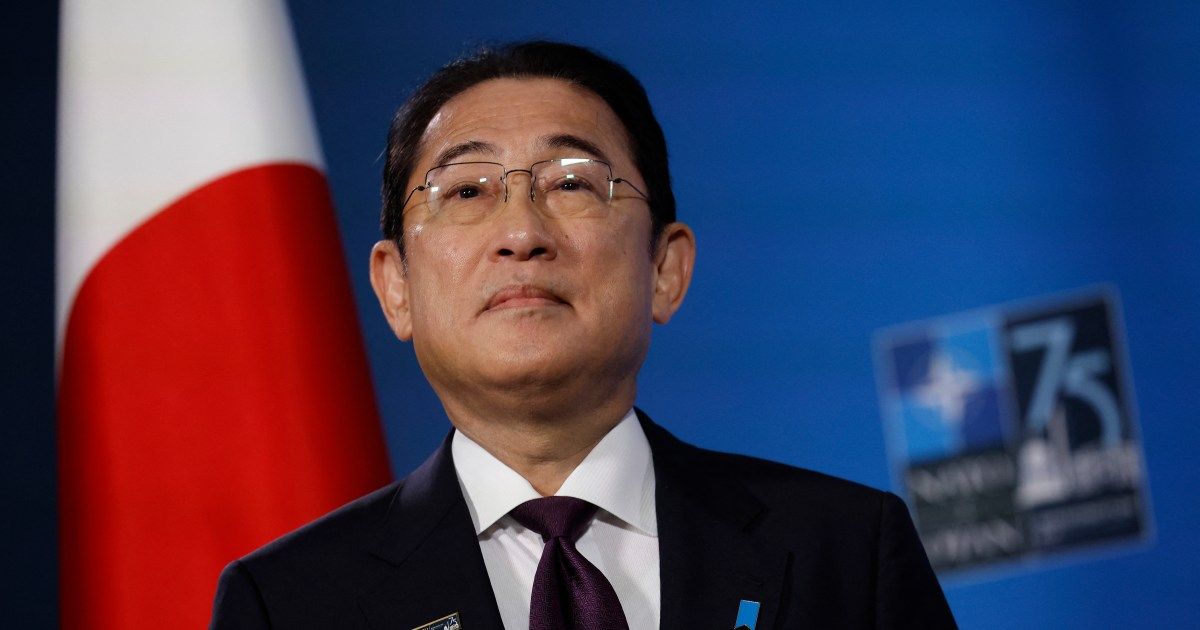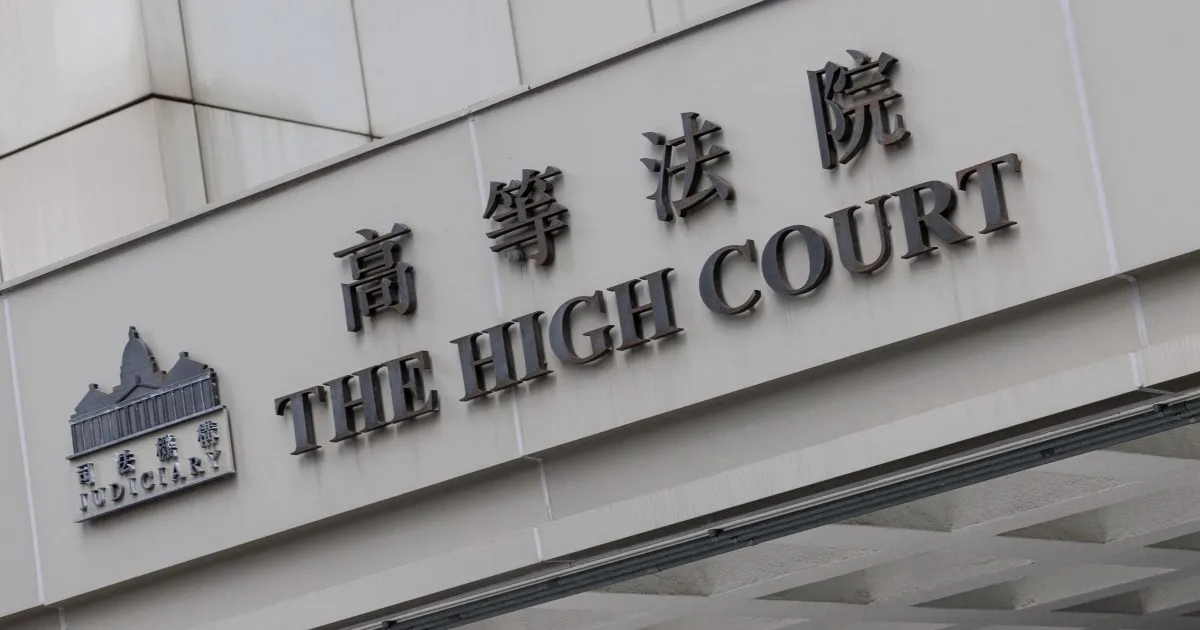In his first policy speech after taking office in October 2021, Japanese Prime Minister Fumio Kishida pledged to “faithfully rebuild” the economy after three decades of stagnation.
In a speech to parliament almost exactly two years later, Kishida said the economy was his priority “above all else.”
“The Japanese economy faces a unique and unprecedented opportunity to achieve a transformation not seen in 30 years,” he told lawmakers.
“To seize this opportunity, I am determined to take bold initiatives never seen before.”
As Kishida prepares to step down following a leadership vote for his scandal-tainted Liberal Democratic Party (LDP) on Friday, the Japanese leader leaves behind an economic legacy characterised by modest gains rather than transformational change.
“The Kishida administration has basically followed the same economic strategy as the Abe and Kan administrations, which was to create a virtuous circle of rising wages leading to a recovery in growth and inflation,” Shigeto Nagai, Asia director at Oxford Economics, told Al Jazeera.
Japan's economy, once seen as a rival to US economic hegemony, has been stagnating since the collapse of a massive stock market and real estate bubble in the early 1990s.
Japan's gross domestic product (GDP) remains below its peak in the mid-1990s. Workers' wages have barely grown since the height of the bubble, rising by less than $1,200 between 1991 and 2022.
After taking office in October 2021, Kishida called for a “new capitalism” that fosters innovation and growth while ensuring a fair distribution of profits.
In practice, Kishida, 67, pursued policies that largely stuck to the main pillars of “Abenomics,” named after his predecessor Shinzo Abe: heavy deficit spending, quantitative easing and structural reforms.
“Kishida’s new capitalism aimed to adapt Abenomics by adding encouragement to start-ups and greater adoption of digital technology, including policy support for semiconductor manufacturing, protecting critical mineral supply chains and improving transportation and communications infrastructure,” Craig Mark, an adjunct professor of economics at Tokyo’s Hosei University, told Al Jazeera.
“The politics of new capitalism also rhetorically promised to continue trying to reduce gender inequality and help families with the costs and burdens of raising children.”
Kishida, who suffered low approval ratings throughout his tenure amid a series of scandals involving his LDP, also implemented substantive policies of his own, including a major expansion of tax incentives aimed at encouraging the public to invest more of their savings in the stock market.
“The shift of huge household assets, which had been concentrated in bank deposits and insurance products, into risky assets such as domestic and foreign stocks and bonds is helping to revive the dynamism of the Japanese economy from the financial side,” said Nagai of Oxford Economics.
Arguably Kishida's most important decision was the appointment of Bank of Japan Governor Kazuo Ueda, who in March raised the benchmark interest rate for the first time since 2007, marking a break with decades of loose monetary policy.
While Kishida has presided over positive changes in some areas of the economy, progress has been uneven, casting doubt on prospects for a long-term reversal of economic fortunes.
After Japan's economy expanded 1.9 percent in 2023 (one of its strongest performances in decades), GDP virtually stagnated during the first half of this year.
“The BoJ has finally raised the base interest rate to 0.25 percent, signaling an expectation of improving economy, but despite some positive growth in 2023, particularly in the export sector, the Japanese economy has remained sluggish overall, especially in domestic consumption,” Mark said.
Japan's economy remains vulnerable to external shocks, including “a weakening Chinese economy, geopolitical instability in the Middle East and Europe, and the possible return of another Trump administration,” Mark added.
Although Japan's biggest companies announced their biggest wage increases in 33 years in March, heeding Kishida's calls for higher private-sector pay, workers' earnings have only recently begun to outpace inflation.
Real wages in June rose 1.1 percent, the first increase in more than two years, followed by a 0.4 percent rise in July.
And while Japan's benchmark Nikkei 225 stock index hit its 1989 high this year, the market has been plagued by severe volatility more recently and has given back a significant portion of its gains.
“Recent positive economic signals, such as rising stock prices and wage increases, are the result of an excessively lower yen and associated inflation, which is already reversing,” Naohiro Yashiro, dean of the Faculty of Global Business at Showa Women’s University, told Al Jazeera.
Ryota Abe, an economist at Sumitomo Mitsui Banking Corporation, said that although he believes it is “too early” to judge Kishida's economic record, there are signs of positive momentum compared with the past.
“In the second quarter of this year, the economy recovered at a stronger pace than the market expected, suggesting that domestic consumption improved on the back of better wage growth,” Abe told Al Jazeera.
“Looking ahead, as people’s wages are expected to improve while inflation is expected to slow, domestic consumption will likely support economic expansion in the coming quarters.”

Other analysts are less optimistic.
Yashiro said recent wage increases reflected higher inflation rather than productivity gains that could spur lasting economic growth.
“Japan's economy has made little progress under the Kishida government, with negative wage increases following inflation continuing over the past three years,” Yashiro said, describing recent signs of economic recovery as a “bumping ground.”
Economists broadly agree that Japan faces major obstacles to a lasting economic recovery, including a shrinking population, lagging productivity and an inflexible labor market.
The East Asian giant's short-term growth expectations are surprisingly modest.
In July, the International Monetary Fund lowered its economic growth forecast for 2024 to 0.7 percent from 0.9 percent, citing disruptions in the auto industry stemming from a safety scandal involving a subsidiary of Toyota Motor Corp.
The financial institution forecasts equally modest growth of 1 percent in 2025.
“With a declining population, even though foreign workers are now at an all-time high of around 3 percent of the workforce, even if Japan accepts large-scale immigration, which is highly unlikely, this will not be enough to counter the inevitable long-term stagnation, which can only be partially offset by a more widespread introduction of technologies such as robotics and AI,” Mark said.
“The long-term challenge for Japan, as for other developed societies such as South Korea and the EU, will be whether it can manage the transition to an economy with a declining population but which can still maintain sustainable prosperity and high and equitable living standards, using high technology and renewable energy.”
Nagai said Kishida's ability to implement the kind of reforms needed to safeguard Japan's future prosperity was limited by political realities.
“In addition to his limited influence within the ruling party, political headwinds, including the ruling party’s serious financial scandal, have led to a decline in public support for his government,” he said.
“This weak political base meant that it was unable to implement drastic reforms that were necessary for the revitalisation of the Japanese economy in the long term but that would be painful in the short term, and its fiscal policy tended to focus on short-term relief measures while avoiding serious discussion of financing measures.”












